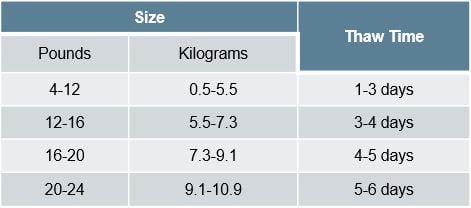- Posted by Anitox
How To Cook A Perfect (And Perfectly Safe To Eat) Holiday Roast Turkey
Whether it’s the holidays or not, there’s never been a better time to play with a new roast turkey recipe. And whether you’re a creative home cook or you prefer to have the hard work done for you, eating turkey doesn’t have to mean cooking a giant bird.
Turkeys are commercially farmed and processed all over the world. Turkey meat is an economical, healthy source of protein, and there is a growing range of delicious turkey products to choose from, from bacon and burgers to whole roasting birds and meatballs.
Whether you’re a kitchen novice or a seasoned culinary pro, turkey is a perfect option; the possibilities are endless. And cooked and prepared properly, it’s safe and nutritious too.
Roast Turkey as a Healthy Protein
Nutritionists cite over-consumption of fat, sodium and calories as our biggest problem. For a healthful diet, eat small portions and choose lower-fat foods whenever possible, especially in the protein group. Turkey is a good choice because it’s leaner than most red meat and even chicken. A 3-ounce portion of roasted skinless turkey breast contains only 3 grams of fat and is naturally low in sodium, containing less than 25 milligrams per ounce.
The MIND diet, intended to promote cognitive function in Alzheimer’s patients, encourages turkey consumption at least twice a week. Turkey meat is not only a great source of protein but contains nutrients linked to:
- Cancer prevention
- Heart Health
- Improved cognitive function
- Blood sugar regulation
Food Safety Checklist:
- Wash your hands, counters and cooking equipment with warm water and soap for at least 20 seconds.
- Make sure raw ingredients don’t touch and that the cutting boards, knives, dishes and cooking utensils stay separate from other raw ingredients.
- Keep uncooked and cold ingredients cold until use.
- Don’t wash your turkey; this amplifies the spread of raw turkey juice.
- Thaw turkey, or any other meat you cook with, in the fridge.
- Cook the turkey until an internal temperature of 165°F is reached; again, ensure you obtain the appropriate internal temperature anytime you are cooking meat.
- Don’t let any of the utensils you used before cooking touch the finished product.
- Remember to package the leftovers and place them in the fridge as soon as you are done eating, so they are still safe for the next day.
You can find appropriate turkey thaw times below. Remember always thaw meat in the fridge with the temperature set at 37°F-40°F.
Tips for a Tasty Roast Turkey
Turkey is a perfect option for any occasion, but with Thanksgiving and Christmas right around the corner, we are all beginning to envision that perfect bird. Fried, roasted, spatchcocked or stuffed, cooking the perfect holiday turkey is easy:
-1.png?width=300&name=Copy%20of%20Untitled%20(17)-1.png)
- It takes approximately 15-20 minutes per pound to cook a turkey adequately at 325°F.
- Measure the internal temperature in the meatiest part of the thigh. If you haven’t hit 165°F, you will need 15-20 more minutes of oven time before checking again.
- Use a rack inside the roasting pan.
- Repeatedly opening the oven door allows heat to escape and will slow the cooking process.
- If the skin is browning faster than the turkey is cooking, cover it with some aluminum foil to achieve that perfect amount of crisp.
Turkey producers worldwide work diligently to provide safe and tasty food for us to enjoy, whether it be an everyday dinner or an elaborate gathering. By enforcing strict biosecurity measures, such as feed pathogen control, turkey producers ensure that the turkeys destined to be served at our tables are safe. To learn more about how food safety is protected by proactive feed pathogen control, check out some of our other blogs.
Want more on turkey production?


